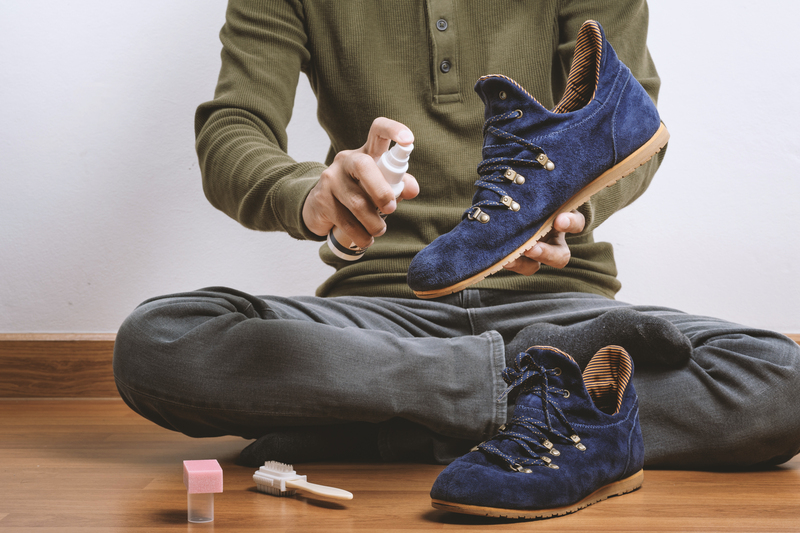Handy Furniture Cleaning Methods
Handy Furniture Cleaning Methods
Keeping your furniture clean not only enhances its beauty but also extends its lifespan. Different materials require specific cleaning methods, and using the right techniques can make the process quick and easy. In this article, we will explore handy furniture cleaning methods to help you maintain your furniture in tip-top shape.
Cleaning Wooden Furniture
Wooden furniture adds elegance and warmth to any space, but it can be susceptible to scratches, stains, and dullness over time. Here's how to clean and maintain wooden furniture:
- Dust regularly: Use a soft, dry cloth to dust your wooden furniture weekly.
- Use a gentle cleaner: For deeper cleaning, mix a solution of mild dish soap and water. Dampen a cloth with the solution and gently wipe the surface.
- Avoid harsh chemicals: Stay away from ammonia-based or abrasive cleaners, as they can damage the wood.
- Polish sparingly: Use a high-quality wood polish once every few months to maintain the shine.

Cleaning Upholstered Furniture
Upholstered furniture, such as sofas and chairs, requires special care to keep fabrics looking fresh and vibrant. Follow these steps:
- Vacuum regularly: Use a vacuum with a brush attachment to remove dust and debris from the fabric.
- Spot clean: Address spills immediately with a cloth or paper towel. Blot the spill rather than rubbing to avoid spreading the stain.
- Use appropriate cleaners: Check the care tag for recommended cleaning solutions. For most fabrics, a mixture of water and mild detergent works well.
- Deep clean occasionally: Hire a professional cleaning service or use a steam cleaner for a thorough clean every 12 to 18 months.
Cleaning Leather Furniture
Leather furniture exudes luxury and sophistication, but it needs regular care to remain supple and attractive. Here's how to clean leather furniture:
- Dust and vacuum: Regularly dust and vacuum the leather surface to remove dirt and prevent scratches.
- Use a damp cloth: Wipe the leather with a damp cloth and mild soap. Avoid using too much water as it can damage the leather.
- Condition regularly: Apply a leather conditioner every 6 to 12 months to keep the leather soft and prevent cracking.
- Avoid direct sunlight: Prolonged exposure to sunlight can cause fading and drying. Position your leather furniture away from direct sunlight.
Cleaning Glass Furniture
Glass tables and shelves can make a space look airy and modern but attract fingerprints and dust easily. Follow these tips to keep glass furniture sparkling:
- Use a glass cleaner: Use a commercial glass cleaner or a homemade vinegar solution (equal parts vinegar and water) to clean glass surfaces.
- Wipe with a microfiber cloth: Avoid using paper towels as they can leave lint. A microfiber cloth provides a streak-free shine.
- Clean regularly: To maintain a spotless appearance, clean your glass furniture once a week.
Cleaning Metal Furniture
Metal furniture, whether indoors or outdoors, can corrode or tarnish if not cared for properly. Use these methods to keep metal furniture clean:
- Dust regularly: Use a dry microfiber cloth to remove dust from metal surfaces.
- Use a gentle cleaner: For more stubborn dirt, use a mixture of water and mild dish soap. Avoid using harsh abrasives which can scratch the metal.
- Polish metal: Use metal polish or a paste made of baking soda and water to remove tarnish and keep the metal shining.
- Protect from moisture: For outdoor metal furniture, apply a protective coating or store indoors during bad weather.
Pros and Cons of Various Furniture Cleaning Methods
Pros
- Enhances the appearance and longevity of the furniture.
- Regular cleaning prevents the buildup of allergens and dust mites.
- Using appropriate cleaners minimizes the risk of damaging the furniture.
- Cost-effective preventative maintenance.
Cons
- Different materials require specific cleaning products, which may be an additional cost.
- Time-consuming, especially for large pieces of furniture.
- Improper cleaning techniques can lead to damage.
- Potential need for professional cleaning services for deep-cleaning tasks.
Tips for Efficient Furniture Cleaning
- Test cleaners on a hidden area first to ensure they don't damage or discolor the material.
- Create a regular cleaning schedule to prevent dirt and grime buildup.
- Use protective covers for furniture to minimize direct exposure to dust, spills, and sunlight.
- Follow the manufacturer's cleaning instructions and use recommended products.

Key Takeaways
- Different furniture materials require specific cleaning methods to maintain their appearance and longevity.
- Regular and gentle cleaning is crucial in preventing damage and keeping furniture in good condition.
- Always read the manufacturer's care instructions and test new cleaning solutions on a discreet area first.
Conclusion
Maintaining the cleanliness and condition of your furniture doesn't have to be a daunting task. By understanding the specific needs of different materials and following the handy cleaning methods outlined in this article, you can ensure your furniture looks great and lasts for years to come. Remember to clean regularly, use appropriate products, and treat your furniture with care for the best results.


